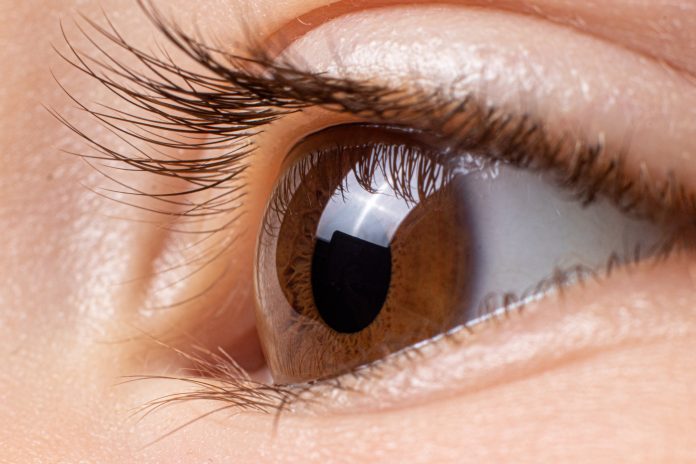Roshni Patel BSc (Hons) MCOptom, Professional Services Manager at Lenstore, discusses how learning at home and spending more time indoors might have an effect on your child’s eyes and what you can do to mitigate any problems
Coronavirus has dramatically affected all of us and how we live. And alongside working from home, many children have had to take to remote learning to replace their trips to school with the outbreak of infections taking place across the country. But how has that affected their eyes – and how can we protect them?
Children and screen time
In the modern age, the whole family is likely to spend many hours a day looking at screens. Everyone should take a break – and for children, school previously helped to regulate the amount of continuous time spent in front of a screen.
But remote learning requires that they sit in a single spot for long periods of time on software like Zoom to get their education. Then with their breaks, unable to spend time with friends outside, they’re likely to remain in front of computers or televisions.
While you can’t necessarily dramatically reduce their screen time because of their educational needs and limited other opportunities for entertainment, there are a number of other ways you can protect their eyes:
- Enforce regular breaks. Even outside of remote learning, you should ensure your child is frequently taking breaks from their screens to help their eyes to rest.
- Encourage them to blink frequently when using a screen. Significant screen time can cause digital eye strain and dryness as we blink up to 10 times fewer a minute when looking at a screen. Blinking more will help keep their eyes moisturised.
- Set and enforce bedtimes. Healthy, consistent sleep patterns allow their eyes to rest and recover from time spent on electronic devices, and while their eyes are still developing, sleep plays an especially crucial role in their growth. Don’t let them stay up late playing video games.
- Have them follow the 20-20-20 rule where possible. Every 20 minutes, have them stand up and look at something 20 feet or more away for at least 20 seconds. This gives their eyes a break to recover, and standing up will help with their posture, too. Even if lessons are longer, they could sit by a window and look out for a few moments every so often.
- Try to spend more time with them away from their devices. While teenagers in particular can be hard to pull away from their screens, it’s still possible to go for walks, play board games, or spend time outside. As much time as can be spent without a screen as possible will be healthy for them – and you!
Positioning their devices
Children have an ability to sit in strange positions and remain comfortable without any apparent strain, but over long periods without moving, this can affect both their eyes and their wider growth.
To combat this as best as possible under the circumstances, you should aim to set their computers up in the right position that ensures they’re comfortable. This includes:
- Distance from screen – When your child looks at the computer screen, the best position for their posture is to have their eyes looking slightly down. The centre of the screen should be between 15 and 20 degrees below eye level (about 10 – 13 cm) and 50 to 71 cm from their eyes.
- Text size and contrast – If text is hard to read, it can cause your child to strain their eyes. By increasing the size of text and ensuring contrast is high (black text on a white screen is ideal), you can protect their vision better.
- Screen brightness – Reduce the brightness of the screen to help reduce possible eye strain. The brightness should be as low as possible while still being comfortable to read to minimise straining.
- Lighting and glare – Try to find a position for the computer screen that reduces any glare from overhead lights or the sun. If a position where the glare from outside can’t be reduced, consider installing a curtain or blind so that light doesn’t fall onto the screen.
Other ways to keep your child’s eyes healthy
It’s not just screens that are a concern for parents during lockdown and coronavirus. There are hygiene considerations and effects on children who wear glasses or contact lenses that should be paid attention to as well.
Make sure they wash their hands thoroughly
Washing your hands is one of the best ways to prevent coronavirus from spreading. It’s also vital for preventing eye infections, particularly for those who wear contact lenses and have to put them in and remove them each day.
Teach your children to wash their hands for at least 20 seconds before and after travel, making sure they get areas that are easy to miss, like the backs of their hands and the tips of their fingers. Tell them to always wash their hands before touching their eyes or glasses, and especially before putting in contact lenses.
Ensure their mask fits closely to their face
Optometrists have begun reporting on a condition called “mask-associated dry eyes” or MADE as a result of the face coverings we wear during lockdown. Because masks don’t necessarily fit perfectly to the face, air is blown up into the eyes and can cause them to dry out faster.
While it’s important to wear a mask to limit opportunities for infection, both for you and them where possible, you should try to make sure the mask fits as close to their face as possible to restrict air flowing up towards the eyes.
An adjustable mask can work well, but even with a normal mask, you can often create a tighter seal by crossing the straps over once before wrapping them around your child’s ears. A tighter fit should reduce dryness of the eyes.
Clean their glasses
Glasses are easy to forget when washing clothes, but they pick up bacteria and germs as easily as anywhere else. Every so often, apply a little dish soap and clean them with a damp cloth to help remove anything that might cause infections, or if your child is old enough, teach them to do it regularly – and continue throughout life.
Avoid touching their face
With the worries of infections, the best practice where possible is for your child to to avoid touching their face. Hands are the most easily contaminated part of the body and it’s all too easy to transfer germs to vulnerable areas like your eyes, nose, and mouth by scratching your nose or rubbing their eyes.
But this also applies to you – try to avoid touching your children’s faces, as it’s just as likely that your hands could spread an infection.
These tips should help you maintain your child’s eye health and protect against infection.











